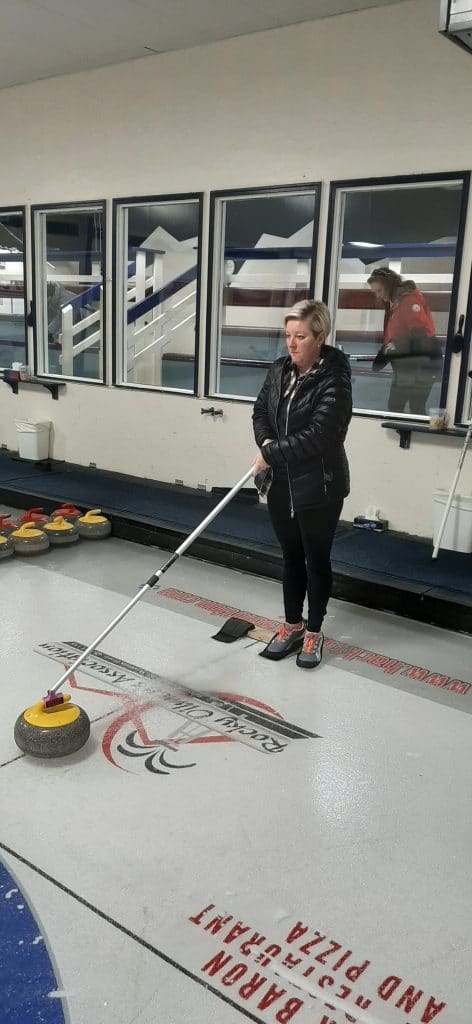Sturling’s humble roots

Photo: Caroline Curling Club
for all ages and abilities, “sturling” remains focused on fun and inclusion
By: Carson Schultz
Sturling, a 2-person team variant of curling co-invented by Brian Dingman and Carson Schultz of Didsbury, Alberta in 1998, originally it was called “Push Broom Curling” because players used our push brooms to deliver the rocks. Delivery sticks soon became popular and thus the name was changed to “Stick Curling.” In 2003, Garry Sherman brought recognition to the sport by writing and posting articles about stick curling. Some of these articles (Sturling – The Latest Rage and The Benefits of Sturling) can be viewed on the “News” page at Sturling.net.
As the community grew, participants came to the realization that players using the stick can be competitive with slide curlers, and there is no need for the rule requiring use of the stick ‘only’. This restriction is an unnecessary dividing force in many curling clubs. There are plenty of advantages to the two-person team game to appeal to slide curlers without any physical limitations, and get us all playing together. Now, with slide curlers taking part, the name “Stick Curling” is obviously not appropriate. The name “Sturling” was chosen to represent ‘S’tick or ‘S’lide delivery, ‘T’wo-person ‘T’eam, c’URLING’.
We had support from the Curling Canada and the likes of Russ Howard (See article “Champ Endorses Didsbury’s “Unofficial” Sport) who teamed up with Grant Odishaw to become the first stick curling champions for NB in 2005. After ten years, enough interest in a variant of 2-person curling led to the first WCF Mixed Doubles Championship in 2008, which has now gained Olympic status.

Photo: Caroline Curling Club
Sturling, the next step in the evolution of stick curling, provides challenge and excitement for people of all ages on an equal and competitive basis and in a social atmosphere. It is appropriate for people with physical disabilities such as knee, back, heart, or shoulder concerns or simply advanced age. The rocks can be handled with a curling stick from a standing or sitting position (i.e. wheelchairs), or the usual slide delivery can be used, enabling everyone to participate competitively.
Sturling bonspiels are typically one day events that guarantee every team three games. As a game only takes one hour to play, it is a condensed version of the traditional game for spectators and players. Sturling cash spiels (stakes or progressive draw formats) are very popular as they are new, easy to host, and a lot of fun. Many clubs host several of these spiels each year making a profit for clubs. For detailed rules visit Sturling.net.
Sturling bonspiels help to promote league play which results in more curling memberships, dues, and volunteers. Due to the popularity and advantages of the 2-person game most clubs have adopted WCF doubles or Sturling to their league play.
The whole idea of Sturling is to get folks out curling and to have fun!




